Building successful partnerships
Building successful partnerships
LEAP has helped me feel empowered as a mother. LEAP has allowed my daughter to access so many services and has helped her development immensely. It has allowed me to develop new skills that have allowed me to change my career path. LEAP has given me the chance to be part of my community. My family have really enjoyed LEAPs activities and services.
Since 2017
- LEAP partnerships have reached 6,636 people in Lambeth’s diverse, early-years community.
- We’ve partnered with 180+ community organisations, groups and services.
- Our partnerships have run 1,807 events.
LEAP is a collective impact initiative, which means that all our services and activities link together. They all have shared goals to improve outcomes for young children.
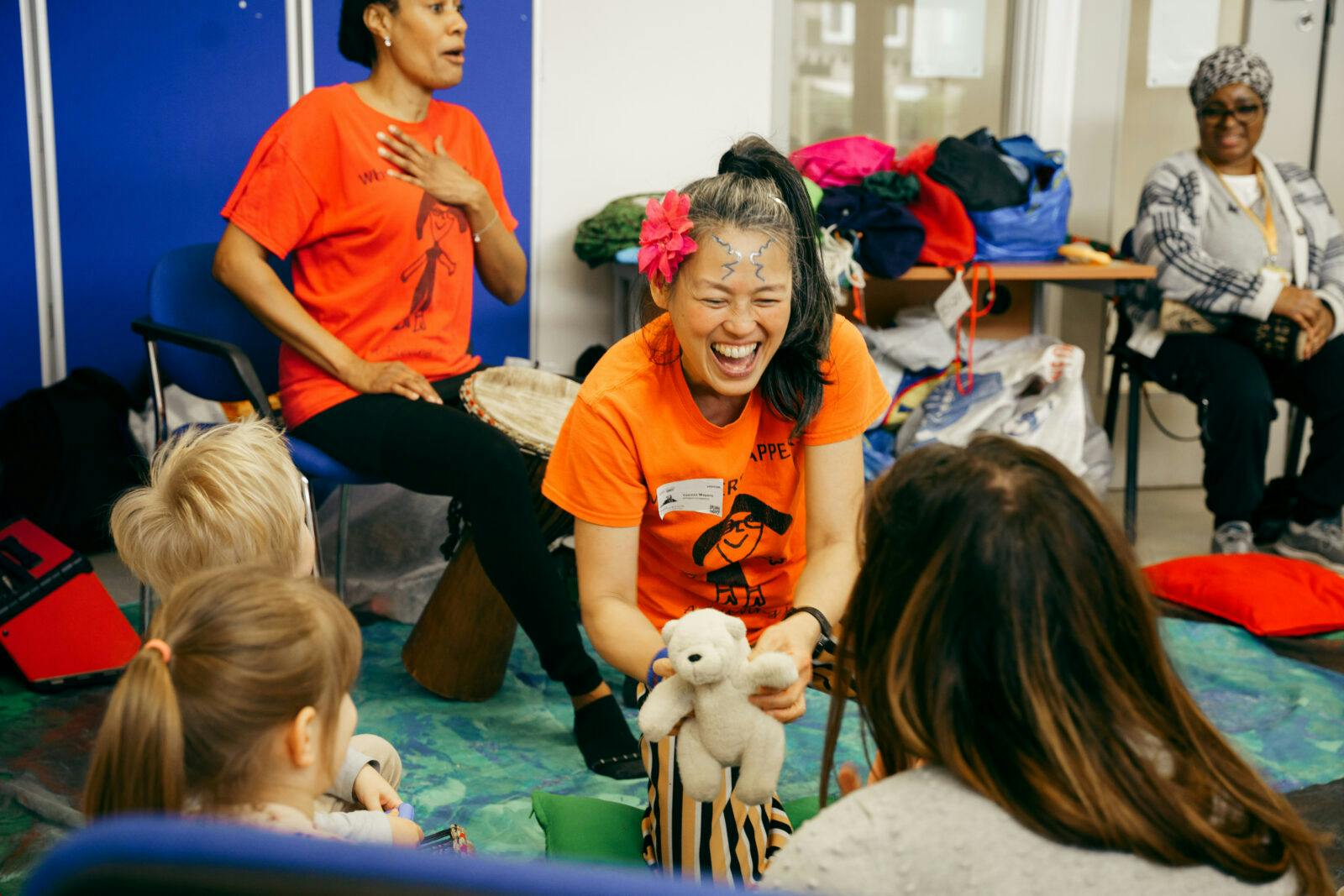
LEAP’s community engagement partnerships come in all shapes and sizes
- One-off partnerships formed to deliver an event. Eg, collaborating with a local housing association to deliver a community activity.
- Referral partnerships signposting between organisations. Eg, establishing pathways between LEAP and local authority statutory help.
- Formal relationships. Long-term strategic collaboration. Eg, LEAP CoCreate funding local voluntary organisations to deliver early years programmes.
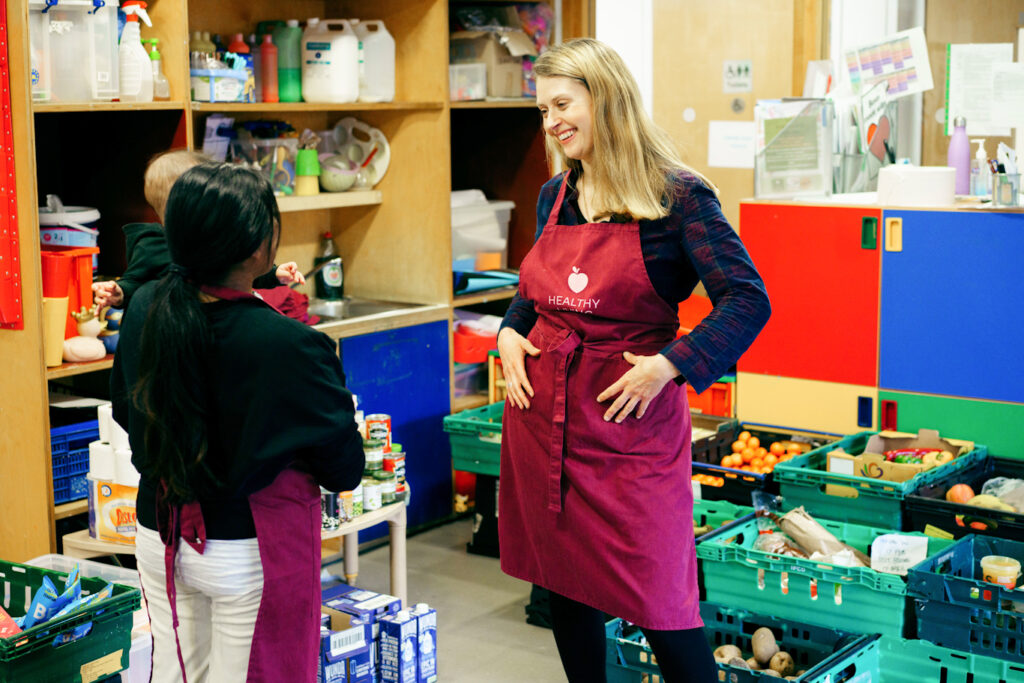
Being flexible with how we partner with others has helped us to meet our goals, which include providing high-quality events, connecting parents/carers, and signposting families to broader community support.
As a parent, I have found much needed support since before the birth of our first child: classes, support networks, referrals to groups, etc. It is just the two of us with my husband here in the UK so any support we can find is most welcomed. For my child, I am seeing that all the sessions we take part to helps my baby develop by seeing other kids, learning or because we learn how to support her better.
LEAP is part of my life now. Since I get to know LEAP, my life has changed. I am aware of the free services that is available to me as a mother in my community that I take my daughter to. Also, through LEAP, I have been back in employment. I got to know the job through LEAP.
1.0 How to forge successful partnerships using LEAP’s house-building analogy
Building Successful Partnerships: A Blueprint Using the Analogy of Building a House draws on the vast experiences of the LEAP Community Engagement team. This guide has been developed by Davina Belcher, LEAP’s Co-Create Partnerships Manager.
We’ve designed this tool for organisations seeking to enhance delivery, reach new communities, and fill gaps in capacity, resources, and expertise through collaboration. You can use it for forming new partnerships and strengthening existing ones.
Each step mirrors the stages of constructing a house, emphasising the importance of planning, resources, communication, and continuous improvement. We use real-life examples, illustrating how you can apply the principles in real-world scenarios.
These case studies showcase successful partnerships, highlighting challenges faced, strategies employed, and outcomes achieved. By examining these examples, we hope that your organisation can draw inspiration, learn and adapt strategies that resonate with your unique circumstances. These real-life stories will also encourage creative thinking and problem-solving.
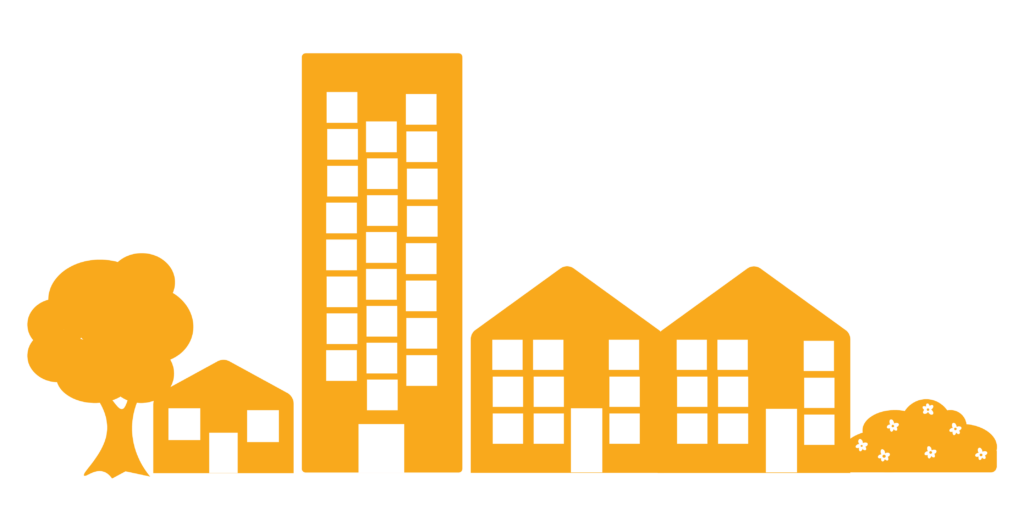
1.1 Planning Permission – setting the groundwork
Purpose
Reflect on your successes. Understand your limitations. Identify partnership opportunities.
Action
Analyse community needs. Identify your limitations in meeting these needs. Research potential partners that can fill these gaps.
Things to consider
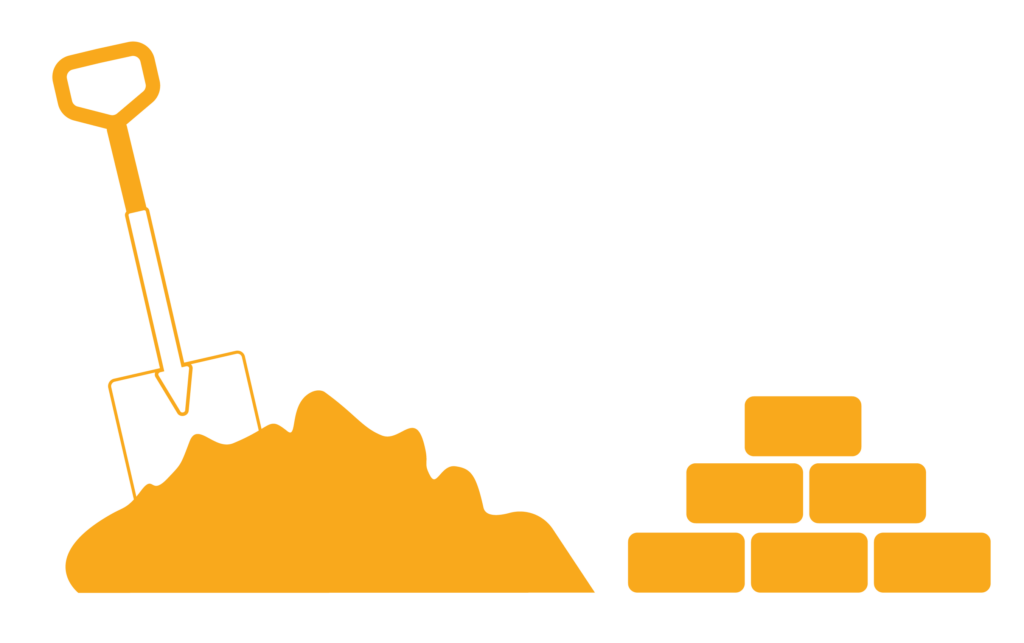
- What are the limitations of your organisation?
- Are there gaps in what you would like to achieve?
- What isn’t working?
- What’s missing from your organisation’s offer?
- What do you lack in capacity/delivery/reach/skills & expertise?
- What is the unmet need of your service users?
- What does the community require and who could you work with to address these needs?
- What are other organisations offering that you do not?
- Who is working in a similar space that could enhance what you do?
- What do other organisations bring that is different to yours?
- Are there limitations in other organisations where you could add value within a partnership?
Real-life example
LEAP’s partners include parents, early years practitioners, nurseries, children’s centres, the National Children’s Bureau, Lambeth Council, NHS trusts, community organisations and several local charities.
The Community Engagement team continually reflect on what could be improved and what is missing from our delivery. We have recognised limitations that have led to us developing a range of partnerships.
We strategically built partnerships to:
a) connect with communities we have struggled to reach
In five years, LEAP community engagement activities had reached only 206 fathers. We wanted to increase these numbers, but acknowledged that we couldn’t achieve this alone, so we partnered with community organisations who worked with dads and had already built trusted relationships with dads in the local community. In the last 18 months, we have more than doubled our reach with fathers to 485.
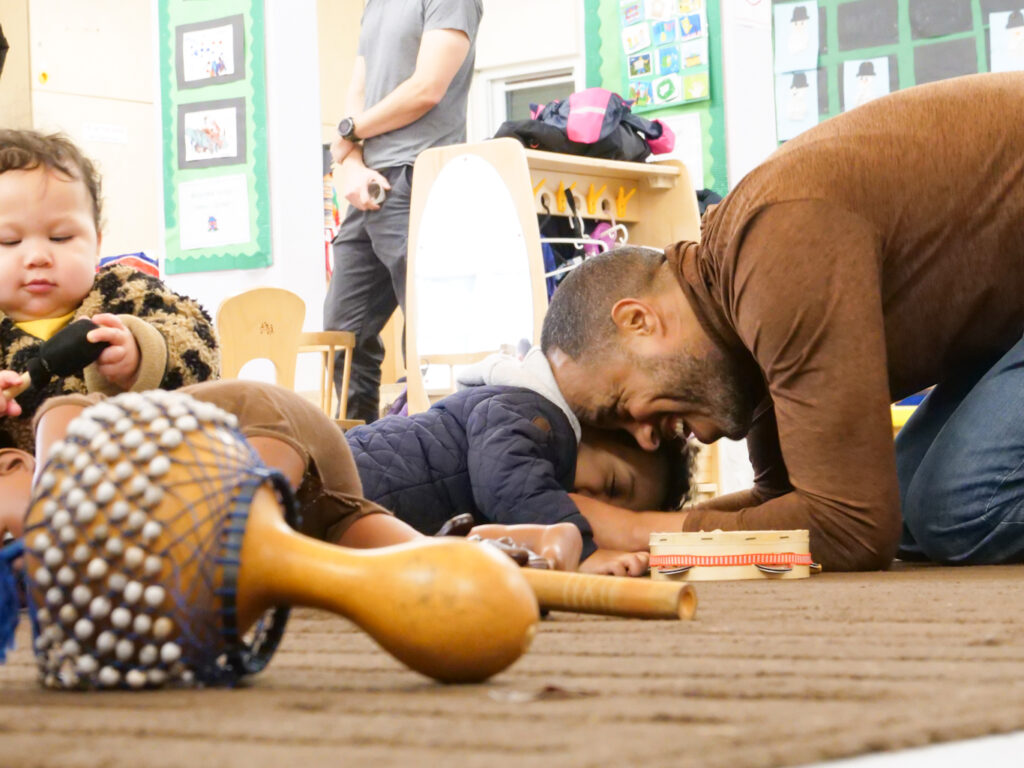
b) provide an enhanced, holistic, community offer for families
Through our CoCreate partnership programme we have invested in partnerships with 14 organisations to broaden our community offer for families. These alliances have focused on: special educational needs, fathers’ involvement, nutrition, creative arts, heritage, culture, music, sport, mental health and wellbeing.
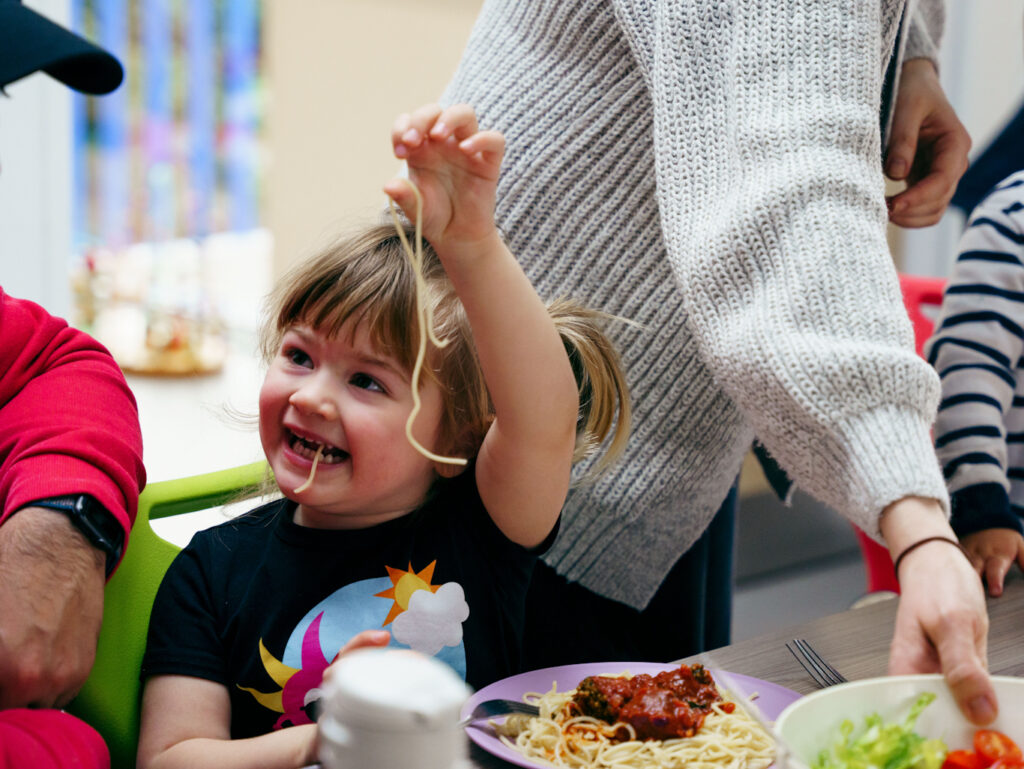
Through these partnerships we have delivered 211 new sessions and events for families. 2,694 people attended. 973 families were new to LEAP.
1.2 Project Manager – coordinating multiple partners
Purpose
Ensure someone drives the partnership forward, coordinating all moving parts.
Action
Appoint, or allocate work hours, to a dedicated individual or team.
Things to consider
- Does your partnership have a number of different partners/stakeholders?
- Which partner might have the staffing capacity to fulfil this role, or to recruit to the role?
- Is there an organisation outside the partnership that can fulfil this role?
- Can coordination be shared among partners?
- What skills and experience are needed to navigate challenges and ensure success?
- How will coordination balance the interests of different partners?
- What support systems will be in place for effective coordination?
Real-life example
First 5 Lambeth is a newly formed consortium of 11 Lambeth community groups, community interest companies and charities. They are working in partnership to benefit early years children and their families.
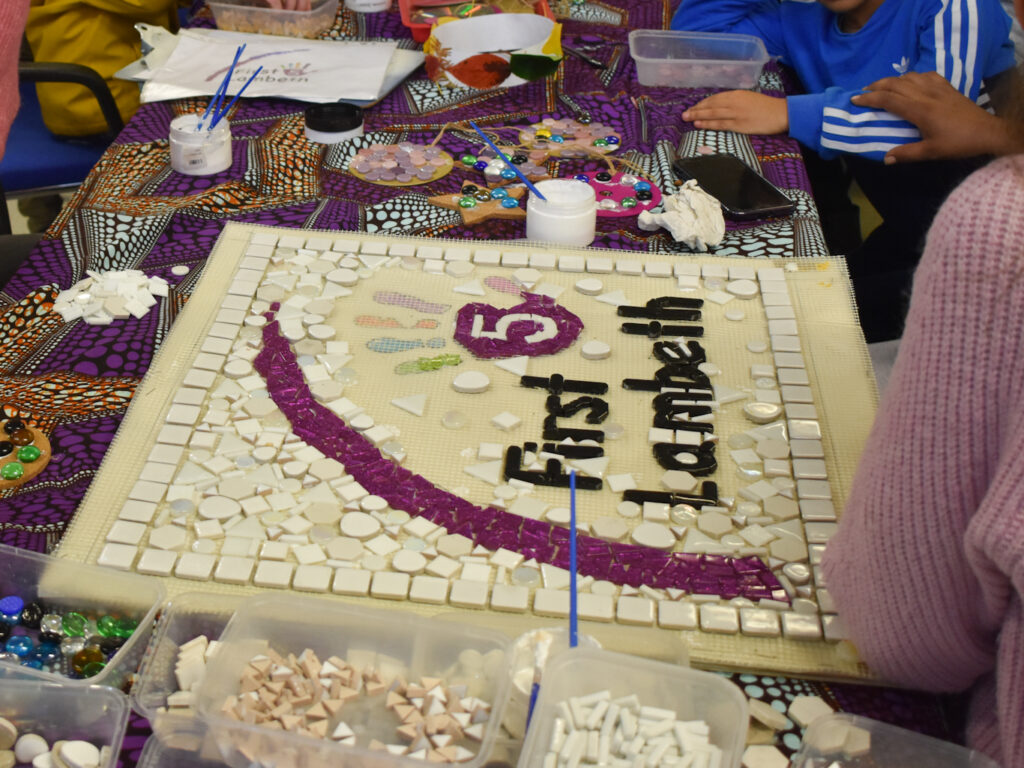
LEAP is taking on a coordinating role during the initial phase (18 months). The consortium aims to sustain this role through funding a specific position in the future.
The coordination role has been crucial in facilitating collaboration: organising meetings, chairing discussions, collating preparation work, bringing together ideas, steering the direction of travel, and conversing with partners to answer questions, coordinate thinking and continue engagement.
A coordinator has the headspace to focus solely on the partnership work. This dedicated role ensures there is time and capacity to coordinate all that is needed for the partnership to function and, most importantly, to be the cheerleader while the partners are busy with the action of the game.
1.3 Solid Foundations – laying the core principles
Purpose
Ensure everyone agrees on the partnership’s core purpose.
Action
Create shared principles. This may include mission, vision, values, and working principles.
Things to consider
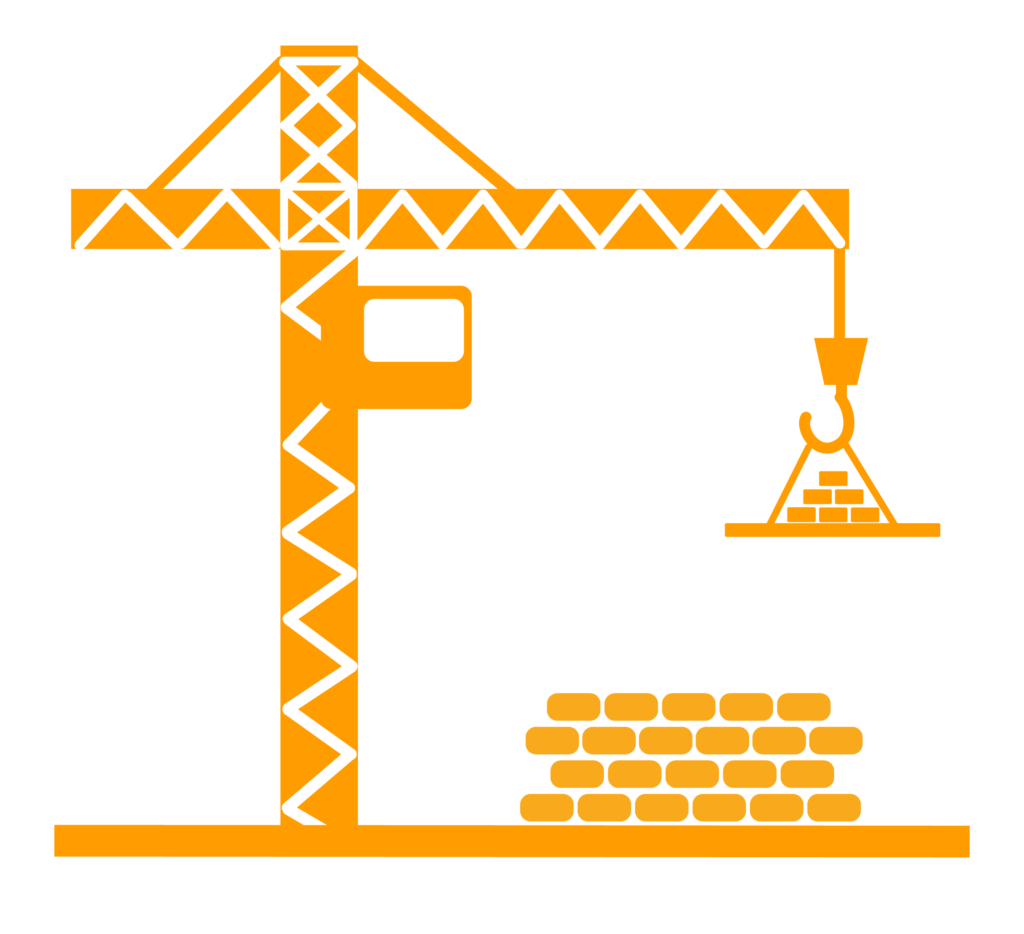
- What is the purpose of the partnership?
- What are the principles underlying this purpose?
- What are partners hoping to gain? For their organisation? For their service users?
- What do the partners want to achieve together?
- How will the partners work together to achieve this purpose?
- What principles and values are non-negotiable for the partnership to function?
- Can you use the above considerations to develop a vision, mission and values?
- Are there conflicts between the core principles, values and missions of the participating organisations? How will you address them?
- Are these foundations flexible enough to evolve with time and circumstances?
- How frequently will you revisit and potentially revise your purpose and core principles?
Real-life example
BiG is a Community Interest Company (CIC) that empowers children and young people to have a brighter future. BiG developed its Young parents’ Hub with a local children’s centre. It experienced how important a shared purpose is.
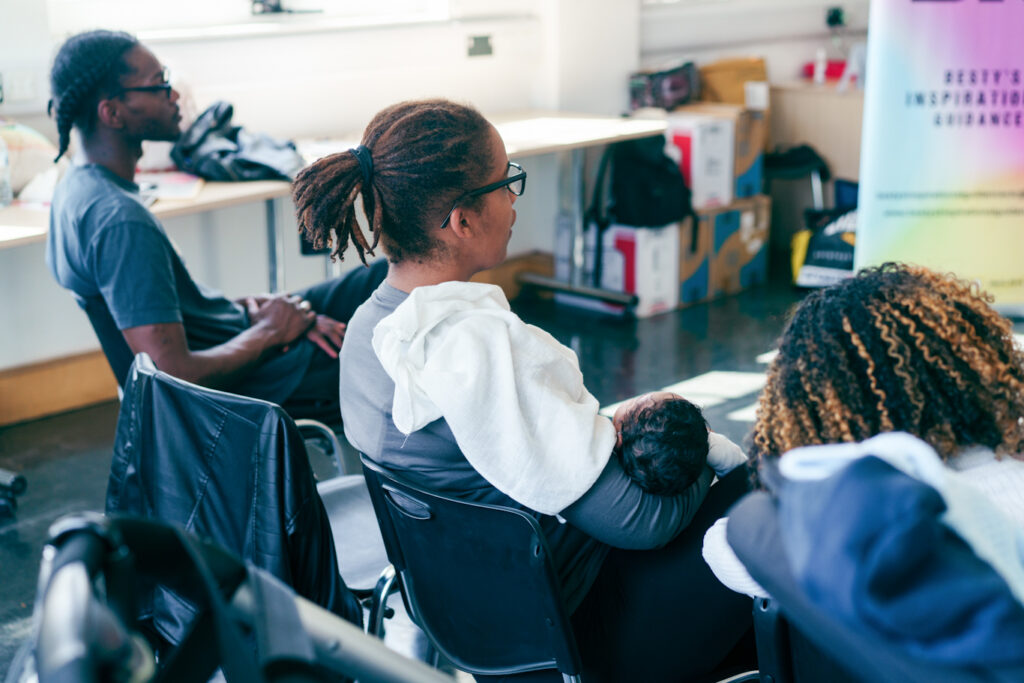
Lionel, the Founder and Director of operations, reflects:
“We learned more about why partnering with the right setting is vital if we want to support young parents. Connecting and partnering with a local children’s centre was like a marriage made in heaven. It was clear when we started talking about the Dream BiG Young Parents’ Hub vision that we had common goals and passions to support young parents.”
The synergy between us was clear to see throughout the development of this initiative. Young parents were very happy to leave their children in the professional, and nurturing care, of the children’s centre staff. It helped them to, first, feel like their children will gain from the experience, as well as themselves.
“And, secondly, that with this peace of mind, they could attend the hub and feel comfortable to get in the right head space to focus on their own needs. Our Shared goals in this partnership meant each partner could use their different skills and expertise but for the very same purpose and outcome.”
One mum commented:
“The children’s centre crèche is a safe place for my sons, especially my eldest as he suffers from separation anxiety and is on the spectrum for autism.”
The partnership with the children’s centre is a BiG plus for me with their professional and caring staff and now I will be putting my son in their preschool. Knowing he was safe and well, meant I could think about myself in this time in the hub.
“The crèche where our children spent their session is perfect for him as they are patient, understanding and bilingual. We speak Portuguese and English at home so one of the biggest problems for me would be when he needs something, and no one understands him, or he doesn’t understand.”
1.4 Building the Framework – setting up governance structures
Purpose
Create a framework of how partners work together for more formal partnerships.
Action
Define roles, responsibilities, and the decision-making processes.
Things to consider
- How will decisions be made within the partnership?
- Will you create a smaller working group or board?
- How will you handle disagreements among partners?
- How will you ensure that all communication is inclusive?
- What platforms or tools will you use to facilitate collaboration?
- How will you address any participation imbalances among partners?
- How will you ensure that partners can join or exit the partnership smoothly?
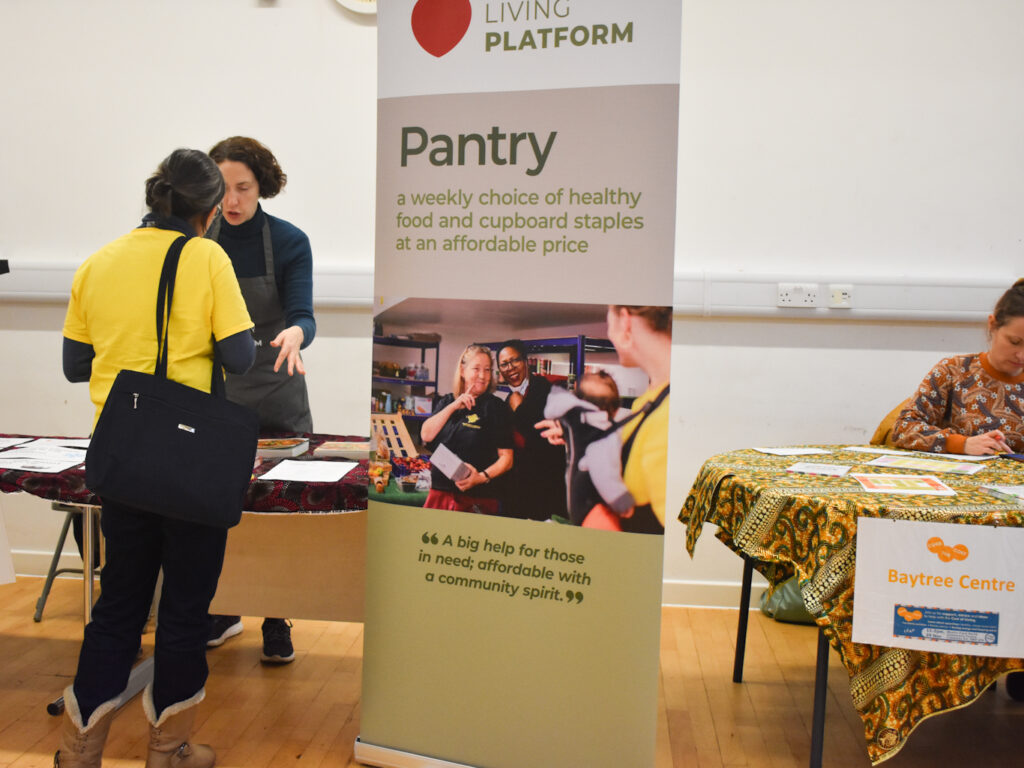
Real-life example
Healthy Living Platform (HLP) ran a healthy, home-cooking course. It teamed up with a local children’s centre that it had previously established a strong working relationship with.
A member of the HLP team reflects on how explicitly agreeing ways of working led to an effective partnership:
“One of the reasons this course worked so well was the strong partnership between HLP and the children’s centre. We chose to work with a local children’s centre that we’d worked with before and had established a good working relationship with.
We knew they’d be able to support with promoting the course and identifying families who would benefit. From the beginning, we agreed to work in a collaborative way and share decision making. We decided that the lead contacts from each partner would meet regularly to make any decisions and tackle any problems.”
We learnt that successful partnership working involves establishing expectations and processes at the outset and close communication.
“We worked closely together in terms of recruiting participants and managing the administration of the creche. The latter was more time consuming than we anticipated and the costs of the creche were more expensive than we had anticipated in the initial budget plan. However, because we had already agreed our ways of working as a partnership, we were able to solve these problems collaboratively with HLP giving more time to creche administration and the children’s centre agreed to cover the costs.
As partners, we needed to communicate in a timely manner each week regarding expected numbers, attendance and about any other issues. This has shown us that strong partnerships are key to running these types of courses and in the future as we run further courses, a key aspect in the planning is that it will be important to find an organisation that are prepared to collaborate closely with us.”

1.5 Choosing the Materials – allocating resources
Purpose
Commit time, funds, and expertise to your partnerships.
Action
Determine what each party can contribute – from expertise in referral pathways and networking, or reaching diverse communities, to personnel, space or other tangible assets.
Things to consider
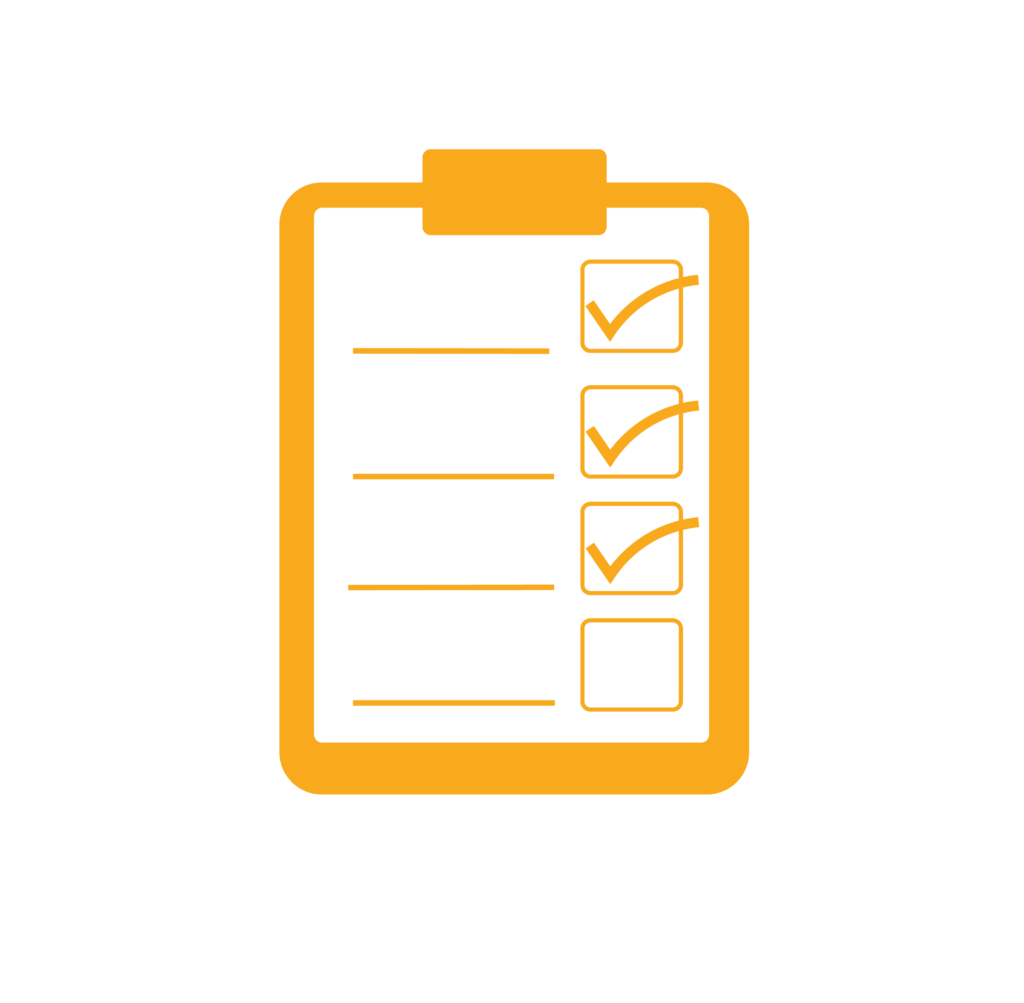
- What gaps exist in one organisation that can be filled by the other?
- What resources can each organisation offer?
- Does there need to be a balanced contribution between partners?
- How will you ensure a healthy dynamic if there are unequal contributions?
- What contingency plans are in place if resources become scarce or priorities shift?
- What unique assets does each partner have? (they may not be obvious)

More considerations
- How can you leverage unique cultural, community or knowledge-based resources?
- Can a partner share strong grassroots connections or deep community trust?
- Is there access to community groups that are hard to reach?
- Is there access to unique or strategically located spaces for events or collaboration?
- How can volunteers help fill gaps or provide needed skills?
- Can you adapt existing innovations or pilot projects?
- Do you have access to unique datasets, research, or specialist knowledge?
- Can memberships or affiliations with groups provide additional support?
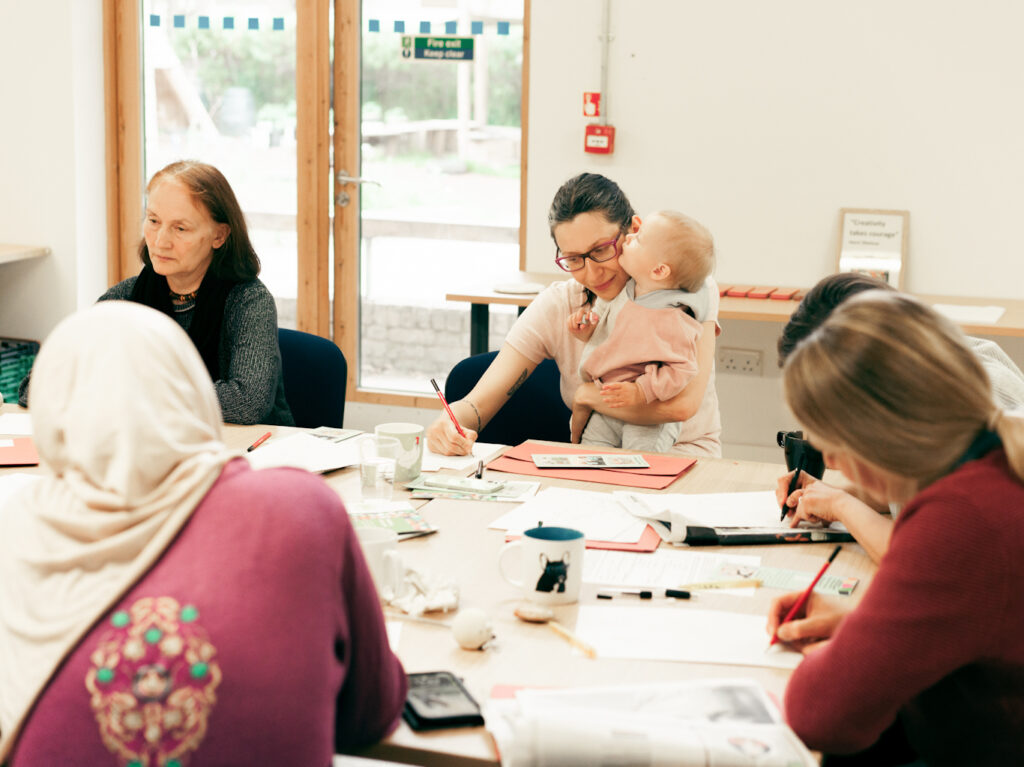
Real-life example
Art4Space is an organisation using art and creativity as a catalyst for change. It developed new partnerships to reach communities that it was previously struggling to engage.
Julie, Founder and CEO at Art4Space reflected on the partnerships:
“We approached new community groups. Our vision was to build new relationships with them.
A local social inclusion charity for women and girls
We have linked with the charity previously, but we were able to strengthen our connection. Staff connected us with specific cohort of clients. Through these stronger links we gained two new users that we have not worked with before. We were in regular contact with their support workers to give updates and offer our expertise on personal development for their clients.
A local charity working with parents with complex histories
We established a positive relationship. A member of their team visited us, which cemented the partnership going forward. Its service users will be able to access our courses. We can draw on the charity’s resources to support parents with complex challenges.”
The most valuable part (of working with LEAP) has been partnering with other organisations who can be referral partners. They have been really well-linked to make sure I get the right people on the course.
1.6 Building Blocks – strengthening the partnership relationship
Purpose
Ensure commitment, engagement, effective communication, collaboration, participation, trust and mutual respect.
Action
Set up regular communication channels. Arrange trust-building activities. Collaborate and encourage input from every partner.
Things to consider

Commitment and engagement
- How will you ensure all partners are committed to the partnership and its goals?
- What strategies will you use to maintain engagement and participation?
- How will you address disengagement or lack of commitment?
- How can you support and motivate each other over the long term?
- How will you celebrate and acknowledge each partner’s contributions?
Communication
- How will you maintain regular and open communication channels?
- What platforms or tools will you use to communicate?
- How will you ensure that everyone is able to input?
- How often should you communicate to keep all partners informed and engaged?
- How can you encourage honesty, even about difficult or sensitive topics?
Collaboration and participation
- What would successful collaboration and participation look like for your partnership?
- What platforms or tools will you use to collaborate?
- How will you ensure participation is meaningful and not just tokenistic?
- How will you measure/assess the quality of collaboration and participation?
- How will you address any participation imbalances among partners?
Trust and mutual respect
- What opportunities are there for you to build trust over time?
- How will you create a safe space for partners to be open and express concerns?
- How will you address conflicts or misunderstandings promptly and constructively?
- How will you ensure conflicts are seen as opportunities for growth and understanding?

Real-life example
CoCreate is a LEAP partnership programme. It’s strengthening our early years offer to Lambeth families by investing in local community groups to develop new initiatives Collaborative working and tailored support are key to its success.
Quarterly learning network events have enabled our CoCreate partners to regularly engage and develop their own relationships with each other. This has fostered trust and encouraged sharing and support. New collaborations have grown organically from these connections which have further embedded the partnerships.
Many of the organisations have been working in silo for many years. This is the first time they have engaged in any form of partnership and they have found it transformative.
CoCreate Fund recipients have said:
I’ve worked in isolation for many years and this network has made me feel more supported and energised than I have for years.
Meeting like-minded people, connection, networking and working together to clarify everyone’s individual possible strengths and weaknesses, and how to find solutions.
We have the opportunity to explore how we can work together to find sustainable solutions and funding.
Regular opportunities to network were very helpful and a good chance to reflect on the project.
We have managed to collaborate with other fundees, which has been really nice to get their support, their feedback, their ideas.
The learning networks have been meeting for over two years, building strong alliances. A testament to its success is the CoCreate partners enthusiasm to explore further partnerships using a consortium operating model.
The consortium model facilitates collaborative working to provide high-quality support for early years families. Through it, organisations can share strengths and resources, develop business and funding opportunities, and, manage grants and contracts that they win collectively.
First 5 Lambeth consortium will provide a structure for Voluntary and Community Sector (VCS) organisations in Lambeth to work in partnership to provide high quality offers for early years families. Organisations will use it to share strengths, develop business opportunities, and manage grants and contracts they win collectively. The consortium formalised the partnership through a Memorandum of Understanding, forming a steering group and committing parties to work collaboratively towards a shared vision, mission and set of values.
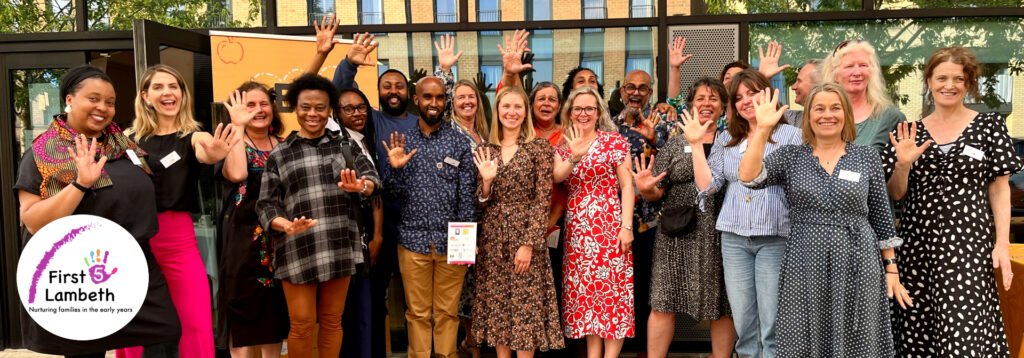
1.7 Variety of Tradespeople – diversifying the skillset
Purpose
Leverage different skills, experiences, and expertise for a robust partnership.
Action
Identify and tap into the unique strengths each partner brings to the table.
Things to consider
- How can you utilise the diverse skills of each partner?
- How will you identify and assess the unique strengths of each partner?
- Are there opportunities for capacity-building among partners?
- How can you ensure that every partner feels valued?
- How can you address gaps in expertise?
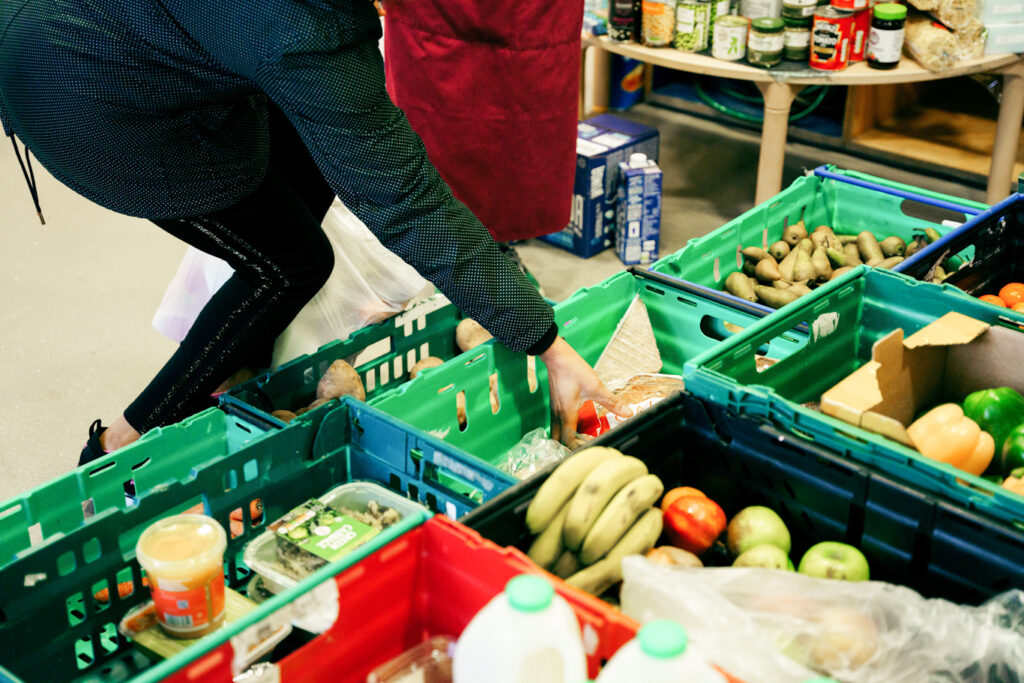
Real-life example
Healthy Living Platform (HLP) helps communities create healthy and sustainable lifestyles. Its pantry service provides free surplus food to local families most in need. HLP works in partnership, harnessing a diverse set of mutually beneficial skills and experience.
Partnering with networks of local councillors: HLP builds trusted relationships with councillors and keeps them updated with its projects. Councillors use their elevated platform to highlight the need for increased local funding for food provision as the cost of living rises. In turn, hoping to gain extra support for HLP to buy items for their community pantries.
Partnering with the local authority: Lambeth Council co-funds the pantry services and signposts service users.
Partnering with children’s centres: Local children’s centres have supported volunteer HLP teams during set up and delivery. In turn, HLP has trained their staff to better support families in leading healthy lifestyles. Two of the children’s centres have appointed a Pantry Liaison to support communications and planning between the children’s centre and HLP.
Partnering with Schools: This widens the pantry reach to all families in the area and increases capacity.
Partnering with local community groups: HLP offers food provision through the excess food hub to community groups throughout Lambeth. These groups then make cross-referrals back to the pantries which increases usage and uptake.
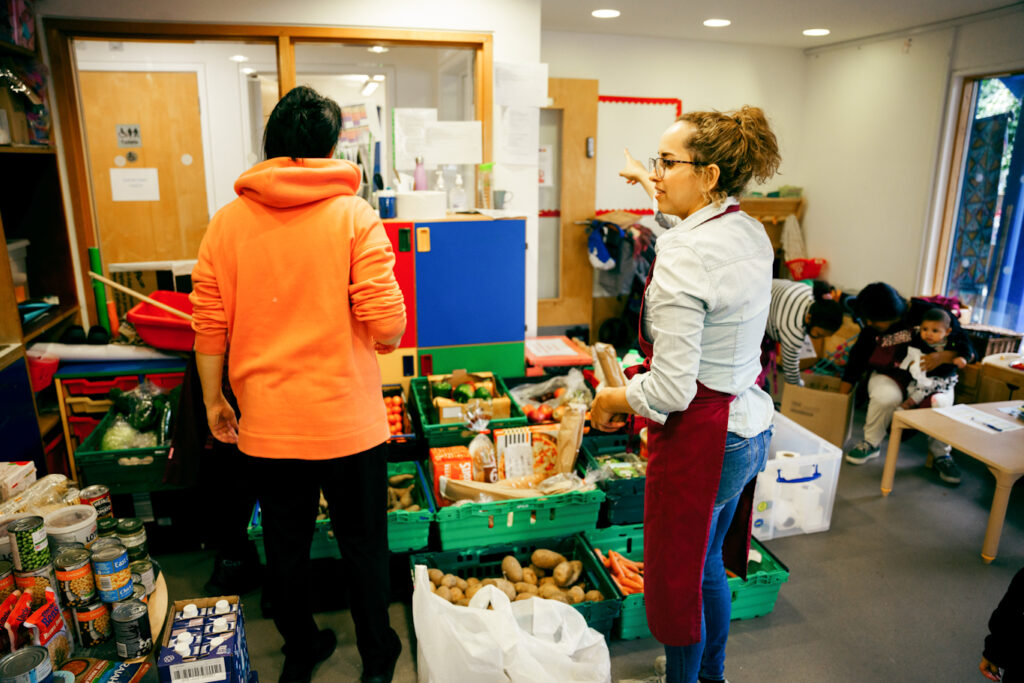
1.8 Maintenance and Repairs – evaluating and adjusting
Purpose
Ensure continuous evaluation to ensure they remain beneficial.
Action
Regularly evaluate the partnership’s performance, seeking feedback from all stakeholders.
Things to consider

- How will you gather insights from all partners?
- How can you ensure the partnership feels authentic and beneficial to all stakeholders?
- How will you incorporate feedback from service users to develop the partnership?
- How will you continually adapt to meet the changing needs of diverse communities?
- What mechanisms exist to regularly refine the partnership’s strategies?
- How can we create a culture of continuous learning and innovation within the partnership?
- How often will you conduct evaluations, and who will be responsible for them?
- Can third parties provide unbiased evaluations of the partnership?
- How will you act on evaluation findings?
- What systems are in place to initiate changes based on evaluations?
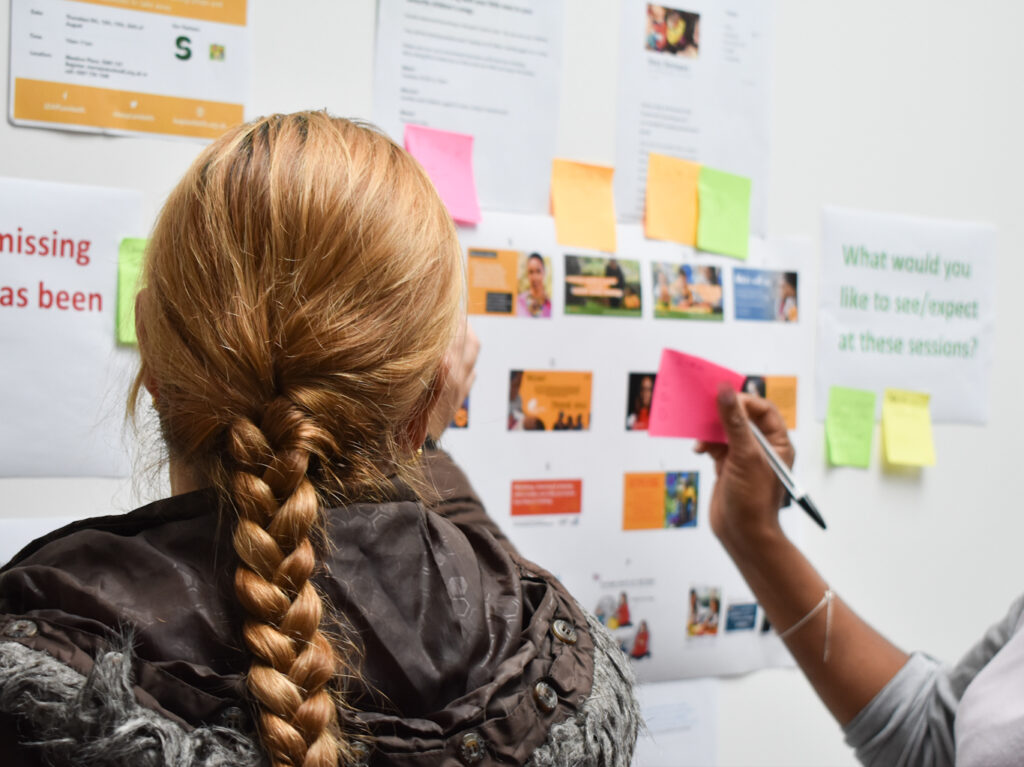
Real-life example
LEAP gathers regular feedback from all partners. There are many mechanisms for this feedback including surveys, focus groups, forums and most recently the introduction of People in the Lead.
People in the Lead is a LEAP focus group for early years parents. It meets on a quarterly basis. During these sessions, parents and carers are encouraged and supported to share their opinions about their experiences of LEAP’s work. We also invite professionals and practitioners, who partner with LEAP, to engage with parents at People in the Lead sessions. This feedback informs future delivery and decision-making.
These sessions provided an invaluable opportunity to gain insight from parents – it was interesting that there were many shared views amongst parents about the appeal of food at LEAP events and suggestions of how we can improve on this. It was also a unique opportunity to reflect on the impacts of the cost-of-living crisis in real time
We have used the feedback to revisit the areas raised and hopefully make positive improvements the Family Information Directory.
The session was a worthwhile experience for helping us develop and shape our potential interventions. The parents involved were insightful and shared their own personal experiences with services, as well as constructively criticised the intervention options.
1.9 Expansion or Renovation – scaling and adapting
Purpose
Create mechanisms for scaling up or adapting.
Action
Identify areas of growth or change. Collaborate on how to expand or pivot accordingly.
Things to consider
- Can you cater to new opportunities or communities?
- Do you need to adapt to a change in the landscape?
- How will you ensure that changes don’t dilute the partnership’s essence or values?
- What indicators will signal the need for scaling or adapting?
- Are there provisions to invite new partners or stakeholders during expansion?
- How will you involve partners in decisions related to scaling or adaptation?
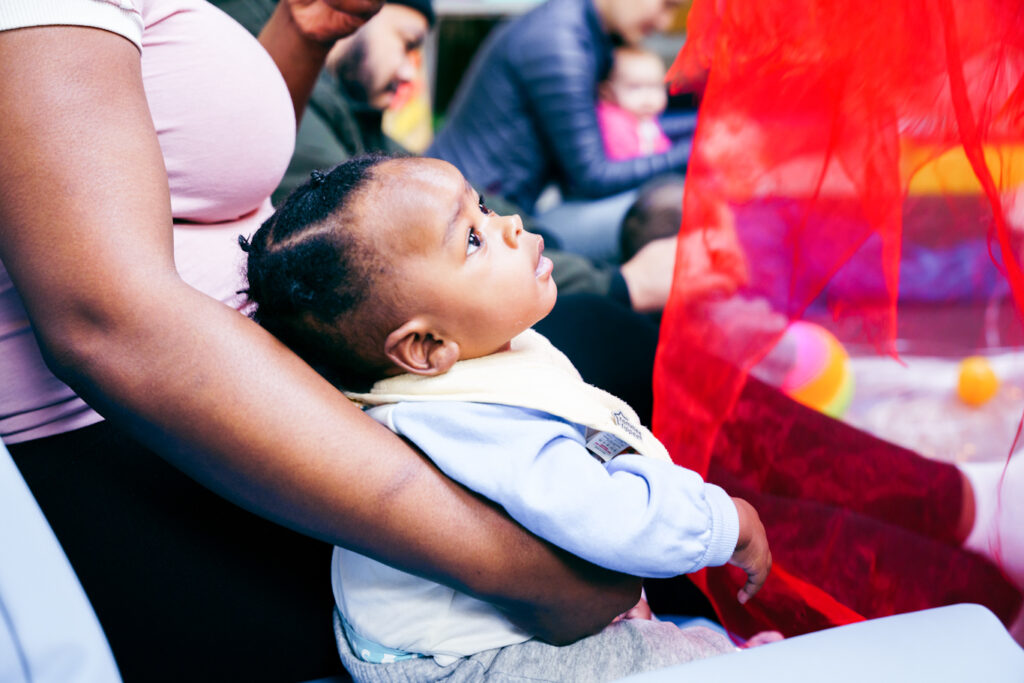
Real-life example
Whippersnappers provides music, sport, theatre and art projects for people of all ages, needs and backgrounds. Working in partnership with LEAP, Whippersnappers piloted an initiative called Choose What You Do Club.
Whippersnappers co-created the fun session with a pre-school child with special educational needs and disabilities (SEND), undiagnosed children with early signs of additional needs, and their family members. The pilot was successful. It engaged over 100 families, 91% of which had never engaged with LEAP before.
In recognising a need to scale up this work, additional funding was sought from ELEVATE – a Lambeth local programme concerned with arts and culture investment. This helped to increase resource and capacity.
Whippersnappers consulted all existing partners before the new organisation was brought in – ensuring that the project stayed true to its mission and values as it scaled up.
As a result, Whippersnappers enhanced the Choose What You Do offer to families, extending it across Lambeth. It led to a year-long research project with parents and carers to raise awareness of children‛s cognitive patterns and behavioural triggers.
This resulted in to deeper discussions on how it can use the creative arts to support the wellbeing of young children with disabilities and their family members. Increasing the number of partners, widened its networks, in turn, increasing the potential to reach and influence decision makers.
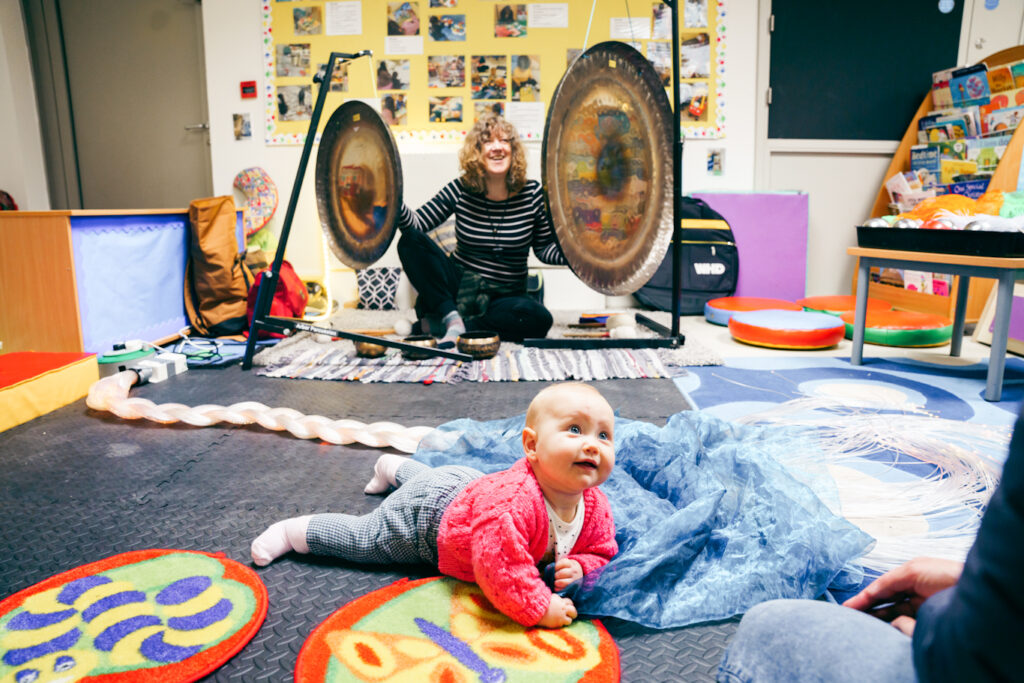
1.10 Neighbourly Relations – engaging the wider community
Purpose
Engage wider community and connect with other stakeholders.
Action
Gather feedback, seek opportunities, and share best practices.
Things to consider
- How will you ensure your partnership is fully embedded in the wider community?
- How can external entities enhance the partnership?
- What lessons can be learned from others?
- How will you conduct meaningful interactions with a broad cross-section of the community?
- Can you work with community organisations that might initially seem unrelated?
- How will you anticipate and manage conflicts with neighbouring organisations?
- How will you gather and act on feedback from wider community stakeholders?
Real-life example
First 5 Lambeth recognises it is a small part of the amazing work to nurture early-years families in Lambeth. It has sought out opportunities with wider community partners to develop and deliver its consortium.
It has prioritised inclusivity: consulting with children’s centres, community groups, charities, local councillors and the local authority to discuss the need for the consortium and where it would add value to the existing landscape. It created a working group of community stakeholders, including a parent representative to lead the consultation process. This has become part of the steering group that oversees the consortium.
First 5 Lambeth held a launch event inviting community stakeholders to become partners in one of the following ways:
- Funding/commissioning development or delivery
- Offering space for to deliver activities, services and support to families
- Joining future funding applications
- Sharing expertise and experience
- Collaborating to develop and deliver of activities, services and support
- Signposting families to our offer
- Promoting to their networks
- Expressing interest in joining as a core member in the future
Many of the attendees pledged to partner with First 5 Lambeth going forwards.
It will launch an event to invite families to partner with the consortium, so they can make sure that it’s as relevant as possible to their needs.
1.11 Housewarming – celebrating achievements and attracting support
Purpose
Showcase unique selling points (USPs) for potential investors and supporters. Demonstrate a sustainable model.
Action
Celebrate successes. Share impact stories. Seek funding and support for longevity.
Things to consider

- How will you celebrate the beginnings of a new partnership?
- How can you showcase achievements to inspire further collaboration and trust?
- How will you ensure all partners, regardless of their contribution, feel important?
- Will you plan events or use platforms to showcase achievements to a broader audience?
- How can you use your achievements to attract more support or resources?
- How can you sustain the partnership and make it attractive to external supporters?
- What unique selling points make your partnership stand out from others?
- How will you keep investors and supporters interested?
- How will you archive achievements for future reference?
Real-life example
Following a year of working together, we united our CoCreate partnerships to celebrate their successes.
Local MPs, community groups, families and funders all attended the event. It was an opportunity to raise the profile of the partnerships to potential supporters and investors.
These groups are to be congratulated for their willingness to listen to each other, learn and adapt, ultimately providing services that really reflect what the community needs.
Following the event, half of the CoCreate partnerships secured funding to sustain their initiatives. Two have created further links with other local organisations to continue their work into the future. All those that attended were keen to find more out about the partnership initiatives and witnessed the impact of investing in collaborative work.
Focusing on the youngest in Lambeth and coming together to provide a support network for families is crucial for knitting our community together from the very start.
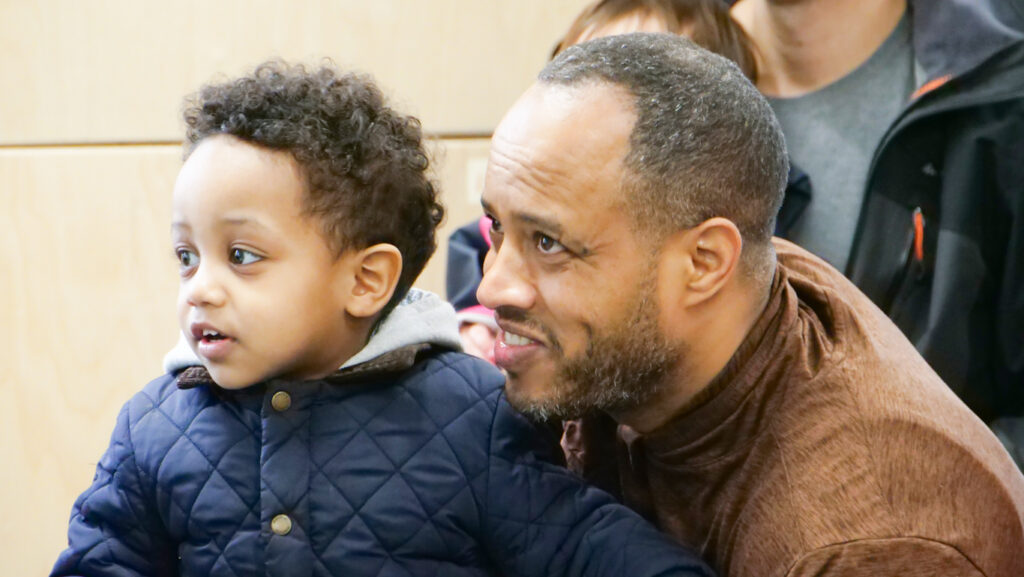
Written by Davina Belcher, CoCreate Partnerships Manager, Lambeth Early Action Partnership